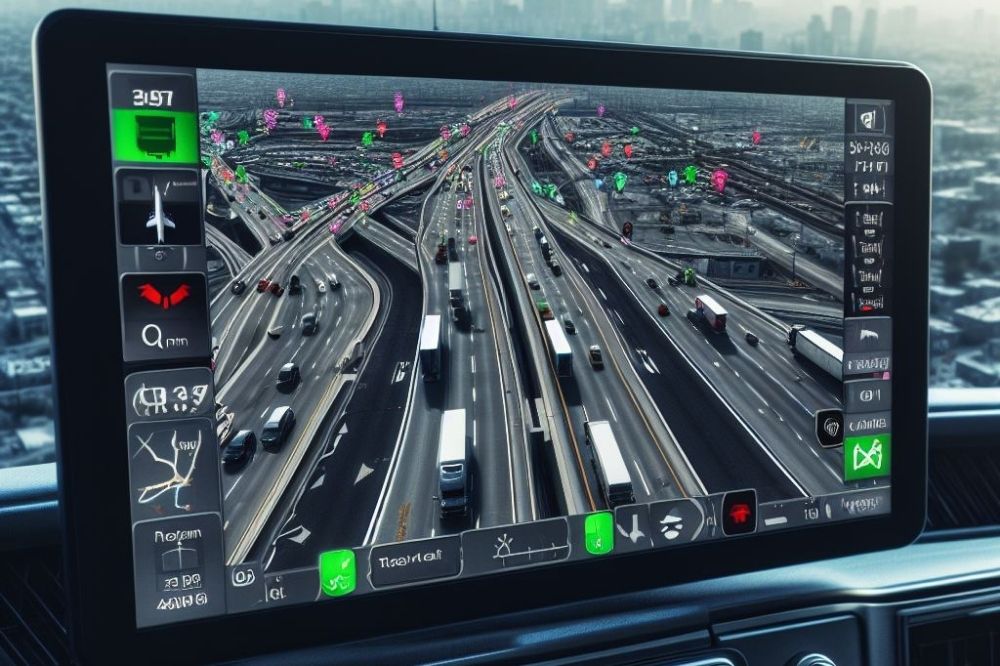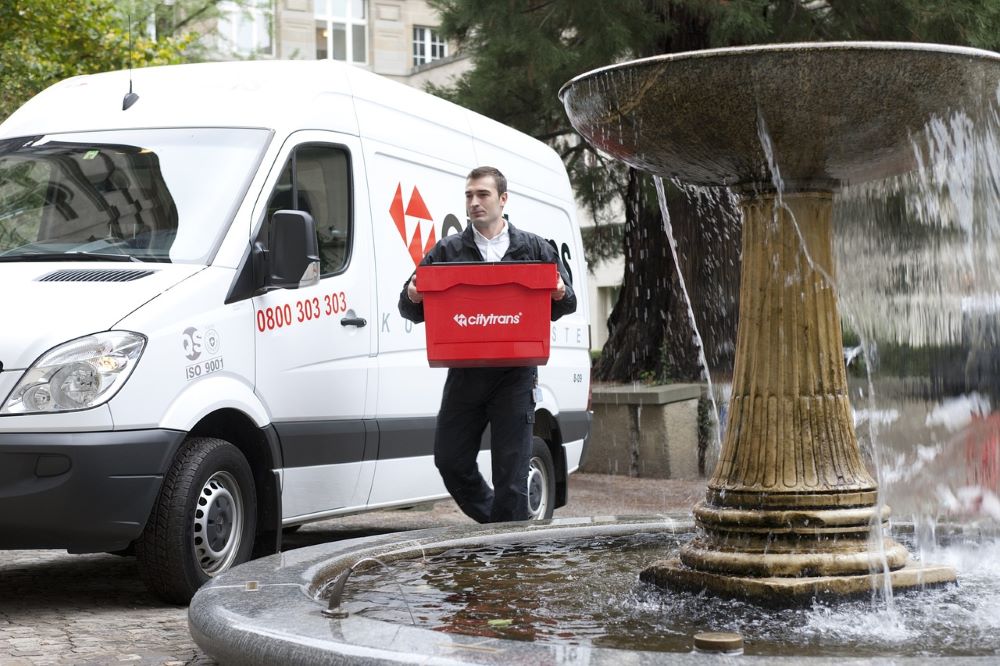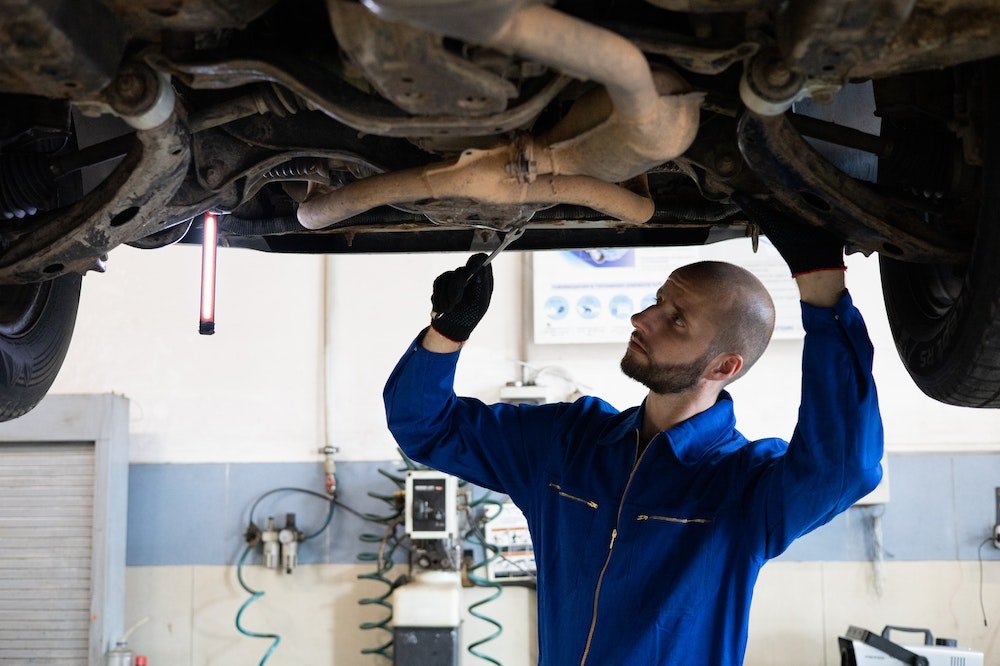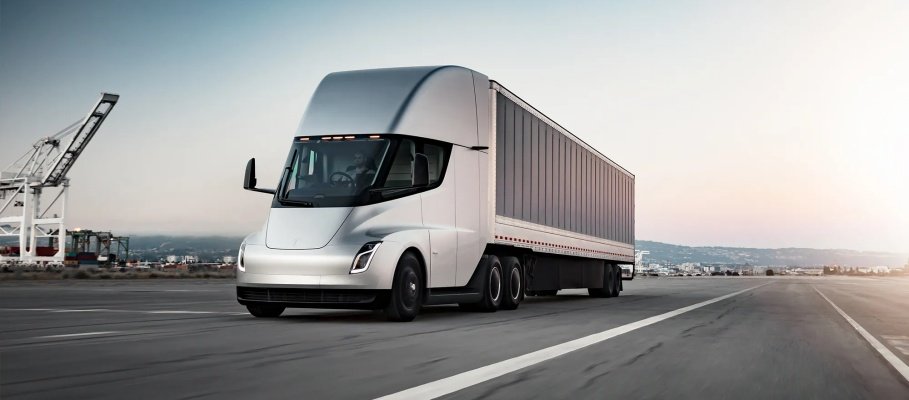
If you’ve been in the trucking industry for a while, you already know how important it is to keep everything running smoothly. From fleet tracking to ensuring driver safety, the challenges can feel overwhelming. That’s where telematics and artificial intelligence (AI) come in.
By combining real-time data, GPS tracking, and onboard diagnostics, telematics offers a comprehensive solution to help you manage your fleet more effectively.
In this article, we’ll walk you through how telematics is transforming the trucking industry, making fleet management more efficient and cost-effective.
The Role of Telematics in Trucking
Telematics in trucking is a management software that integrates GPS tracking, onboard diagnostics, sensors, and communication tools to provide real-time vehicle data. It acts as the eyes and ears of fleet managers, offering insights into vehicle performance, driver behavior, and operational efficiency.
By leveraging data, telematics enhances decision-making in logistics, helping track fuel consumption, maintenance needs, and driver performance. Its impact on fleet management is significant, with fuel savings of up to 20-25%.
Fleet operators can optimize routes, minimize downtime, and prevent costly repairs through predictive maintenance. The result? Fewer delays, improved on-time deliveries, and a highly efficient fleet.
Benefits of Telematics in Fleet Management
Trucking companies using telematics notice big wins for their fleets. Let’s look at how telematics can make a real difference in your operations.
Enhancing Efficiency and Productivity
Efficiency is key in fleet management, and telematics enables real-time tracking for precise vehicle monitoring. This allows quick route optimization, reducing delays and saving time.
By minimizing idling and rerouting around traffic or road closures, telematics significantly cuts fuel costs while improving delivery times.
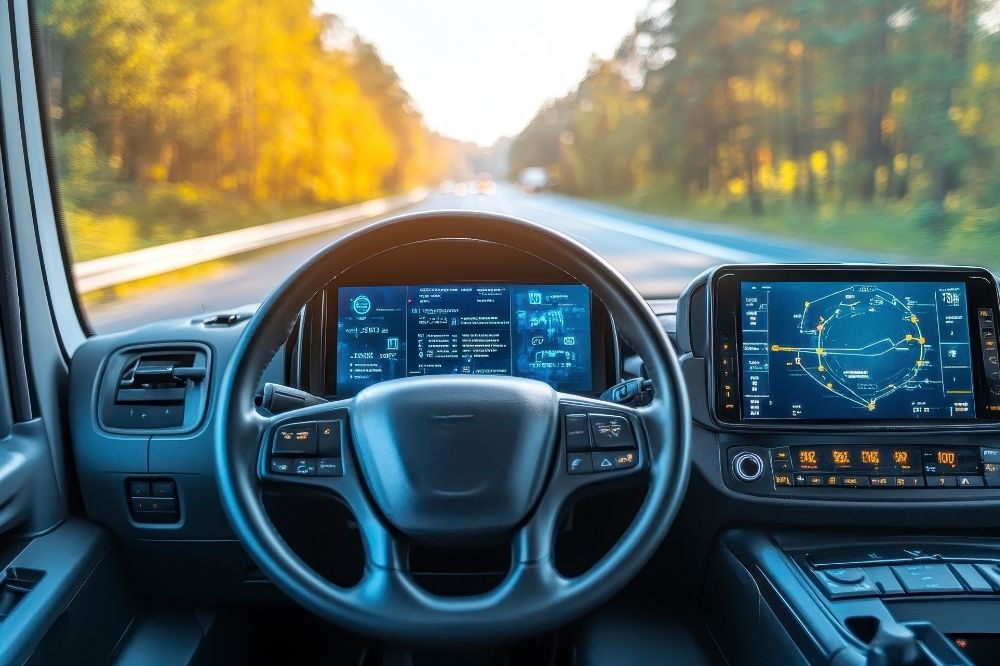
Improving Driver Safety and Compliance
Driver safety is one of the biggest concerns for any fleet manager. With real-time data, you can monitor driver behavior like speeding, harsh braking, and seatbelt usage. This data helps identify areas where drivers might need more training or coaching.
Teaming up telematics with Hours of Service (HOS) tracking ensures drivers are following the rules and regulations, avoiding potential fines.
Reducing Operational Costs
Every fleet manager looks for ways to reduce costs. A telematics device can help you do just that. It provides data on fuel consumption, vehicle maintenance, and driving habits. With this information, you can pinpoint areas where you can save money.
For example, predictive diagnostics alert you to potential maintenance issues before they become expensive repairs. Rather than waiting for a breakdown, you can take proactive measures, reducing downtime and keeping your vehicles on the road longer.
Key Components of Telematics Systems
Curious about what makes telematics tick? Let’s explore key components that power these systems and help fleet managers stay on top of everything from vehicle health to driver behavior.
Onboard Diagnostics
Onboard diagnostics allow fleet managers to monitor vehicle health in real time. This feature provides immediate insights into the engine, transmission, and other critical systems, enabling early detection of potential mechanical issues.
By addressing these concerns before they escalate, fleets can reduce downtime, minimize unexpected repairs, and keep their vehicles operating efficiently for longer periods.
Sensors
Telematics systems rely on sensors to track metrics such as tire pressure, engine temperature, fuel efficiency, and vehicle speed. This data is crucial for optimizing operational efficiency.
For example, monitoring tire pressure ensures better fuel efficiency and reduces wear and tear on tires, while tracking engine temperature helps avoid overheating.

Software Platforms
The software behind vehicle telematics systems is where all the data collected from vehicles is analyzed and interpreted. These management platforms allow fleet managers to track everything from fuel consumption to vehicle maintenance schedules.
Many telematics systems are cloud-based, meaning all data is integrated into one platform that can be accessed securely from anywhere, whether in the office or on the road. The live analysis helps managers make quicker, data-driven decisions to improve fleet performance.
Real-Time Data Collection and Monitoring
Real-time data collection and electronic logging are vital to making timely decisions in fleet management. Telemetry systems gather data about vehicle location, fuel efficiency, driver behavior, and vehicle condition.
This data is processed and made available instantly, enabling managers to respond promptly to issues, reroute drivers to avoid traffic or address maintenance concerns.
Vehicle Location Tracking
GPS technology is a key component of telematics systems, providing live positioning and navigation capabilities. GPS tracking enables fleet managers to monitor the exact location of their vehicles which aids in route optimization and ensures vehicles are on time.
This tracking feature enhances customer service by providing accurate delivery times and location updates, improving transparency and satisfaction.
Engine Diagnostics Monitoring
Engine diagnostics monitoring is another critical feature of telematics systems. By tracking engine performance, fleet managers can identify potential issues early and schedule maintenance proactively.
This predictive maintenance extends the life of the engine and prevents costly downtime. It’s a key part of minimizing operational disruptions and maximizing fleet efficiency.
Driver Behavior Analysis
Telematics systems track and analyze driver behavior, focusing on habits such as speeding, harsh braking, and rapid acceleration. Identifying risky driving behaviors allows fleet managers to address safety concerns and coach drivers on safer practices.
This improves overall safety, reduces accidents, helps lower fuel consumption, and prolongs the lifespan of vehicles.

Applications of Telematics Across Sectors
Telematics extends beyond trucking, enhancing efficiency, safety, and operations across various industries. Here’s how different sectors use this technology.
Commercial Fleets
Real-time tracking allows fleet operators to optimize routes, reducing fuel consumption and ensuring timely long-haul deliveries.
Telematics also enhances driver safety by providing instant feedback on driving habits and simplifying HOS compliance, minimizing risks and violations.
Construction Fleets
In the construction industry, telematics systems are used to monitor heavy equipment, such as cranes, bulldozers, and dump trucks. Fleet managers can track the location and usage of this equipment, ensuring it is deployed efficiently and is well-maintained.
Telematics also allows managers to schedule preventative maintenance based on actual usage patterns, preventing expensive breakdowns and extending the equipment’s lifespan.
Public Transportation
Telematics is equally beneficial for public transportation systems. By tracking buses and trains in real time, transportation authorities can provide passengers with up-to-the-minute updates.
They can also optimize routes to ensure minimal delays, improve fuel efficiency, and enhance safety measures. Real-time data allows for better fleet management and ensures more reliable service.
Impact on Insurance
Telematics doesn’t just benefit fleet managers. It also plays a vital role in the insurance world.
Risk Assessment
Telematics data plays an essential role in improving insurance risk assessment. Insurance companies use the data to evaluate driver behavior, such as speed, braking habits, and acceleration patterns.
Safe drivers who demonstrate good habits, like maintaining speed limits and avoiding harsh braking, may benefit from lower insurance premiums. High-risk drivers might face higher costs.
Claims Management
In the event of an accident, telematics can expedite the claims process. By providing real-time data on vehicle speed, location, and driving behavior, telematics helps insurers quickly assess the situation and settle claims more efficiently.
This data ensures a more accurate assessment, which leads to faster and fairer resolution of claims.

Challenges in Implementing Telematics
While telematics offers a ton of benefits, it’s not without its challenges. Here are some hurdles that fleet managers might face when adopting telematics and how they can be tackled.
Data Privacy and Security
With the large amount of data telematics systems collect, data security becomes a critical concern.
Fleet managers must ensure they implement strong security measures to protect sensitive information. This includes using secure software platforms and ensuring that all personnel are trained in data privacy best practices.
Cost of Implementation
While the upfront cost of installing telematics systems might seem significant, the long-term savings often outweigh the investment.
By reducing fuel consumption, minimizing maintenance costs, and potentially lowering insurance premiums, the return on investment is substantial. For smaller fleets, telematics can still provide significant benefits, making it a valuable tool for improving overall fleet efficiency.
Integration with Existing Systems
For fleets that already have management systems in place, integrating telematics may require some effort. It could involve upgrading software, training staff, and ensuring compatibility between existing tools and new telematics technology.
However, with proper planning and execution, integration can be smooth and the benefits will significantly enhance fleet operations.
Future of Telematics in Transportation
The future of the telematics trucking industry is bright. As technology advances, telematics systems will evolve with more advanced features like artificial intelligence and machine learning.
These innovations will lead to more precise insights into fleet operations, enabling real-time route optimization, predictive maintenance, and more efficient fleet management. Telematics will only become more integral to the success of fleet operations in the coming years.
Final Thoughts
Telematics is transforming the trucking industry by offering valuable insights that enhance fleet operations, improve safety, and reduce costs.
By integrating real-time data, fleet managers can optimize routes, monitor driver behavior, and address maintenance issues proactively, resulting in improved efficiency and reduced operational costs.
Ready to improve your fleet management? Contact Mission Financial Services today to explore how telematics can help streamline your operations!

